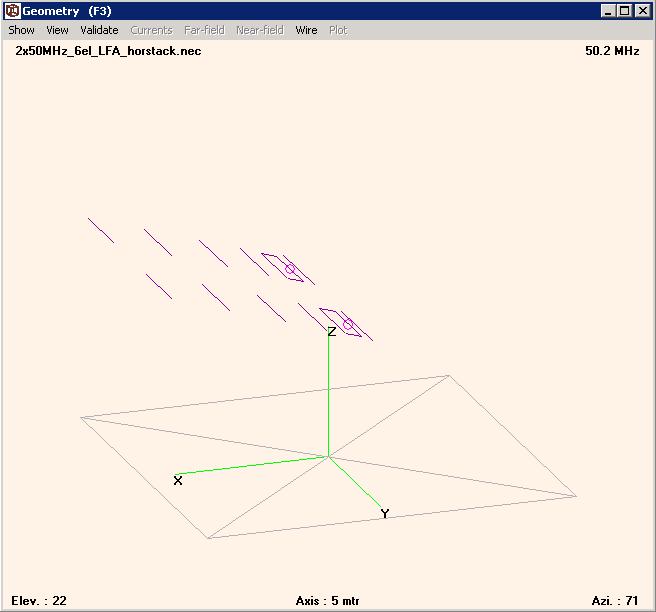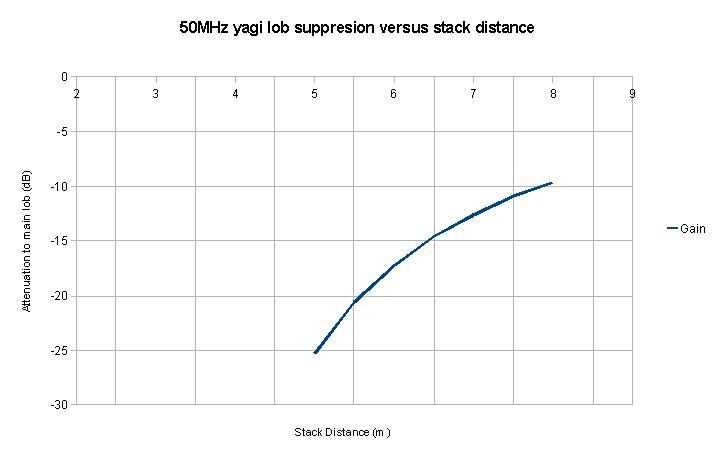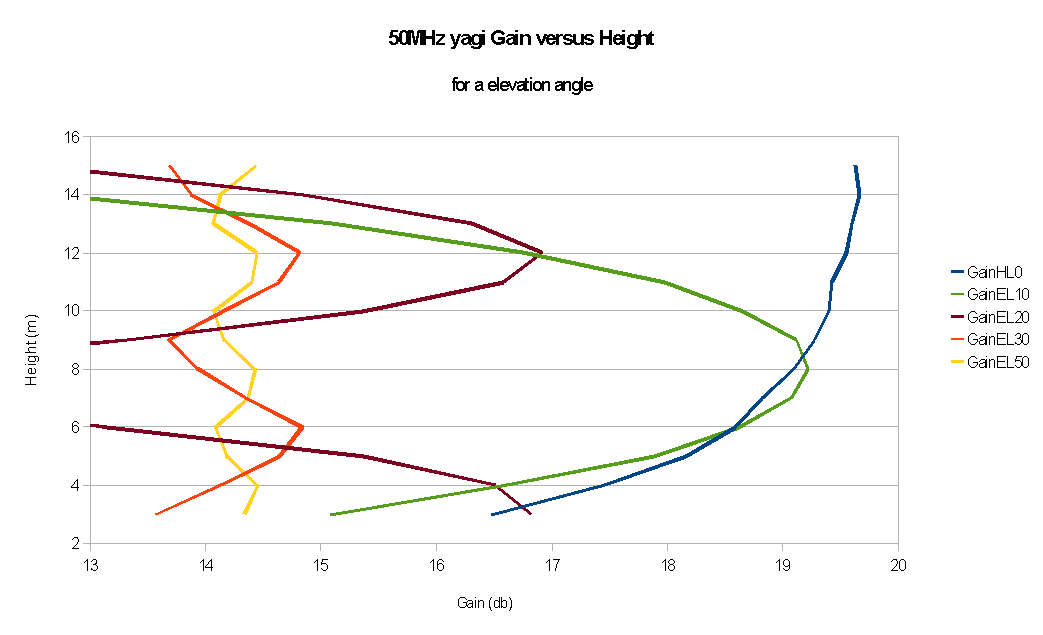| Performance | 11,9dBi @ 50.150MHz |
| Peak Gain | 11,97dBi |
| Peak F/B | 30.21dB |
| Power Rating | 5kw+ |
| SWR | Below 1.1:1 from 50.00MHz to 50.500MHz |
| Stacking Distance | 5.5-6.4m (5.8 recommended) |
| 2 Stacked Gain @ 5.8m spacing | 14,77dBi |
| 2 Stacked F/B | 30,72dBi |
| 2 Stacked Gain @ 5.8m spacing 15 agl | 20,15dBi |
| Boom Lenght | 6.830m |
| Weight | 6.63Kg |
| Turning Radius | 3.699m |
| Wind Loading | 0.26 Square Metres |
| Wind Survival | 203KPH |



